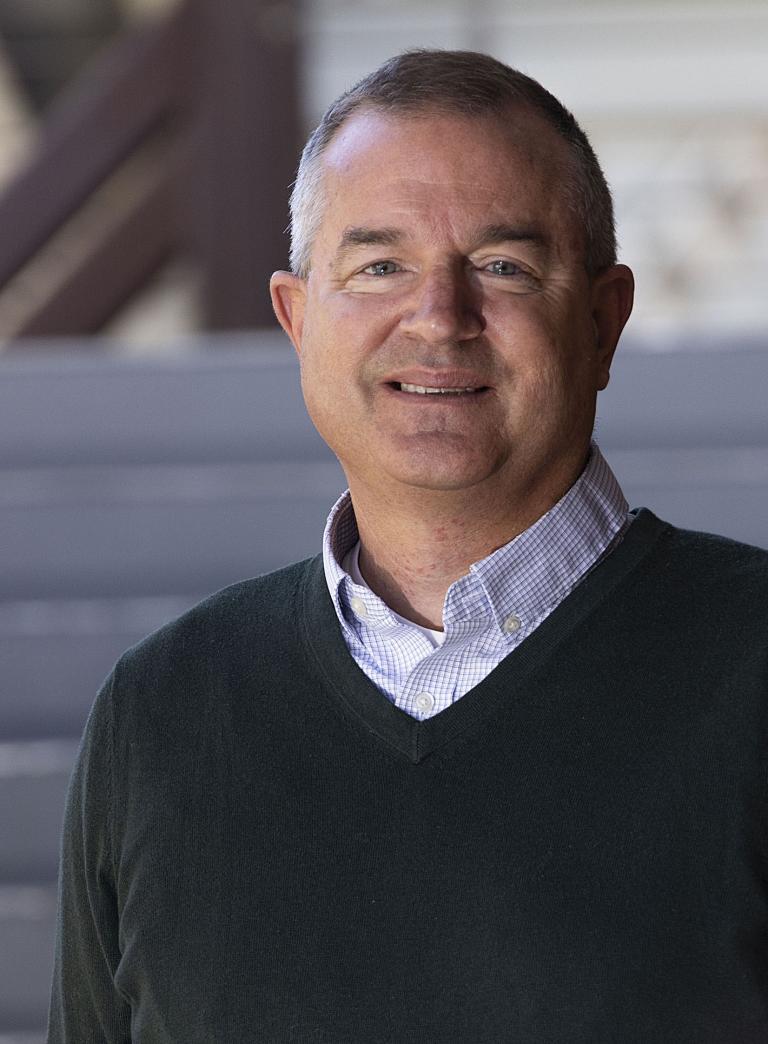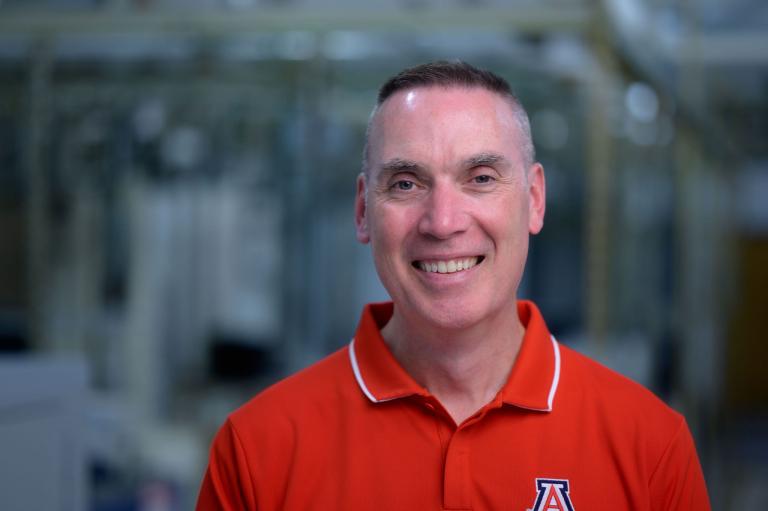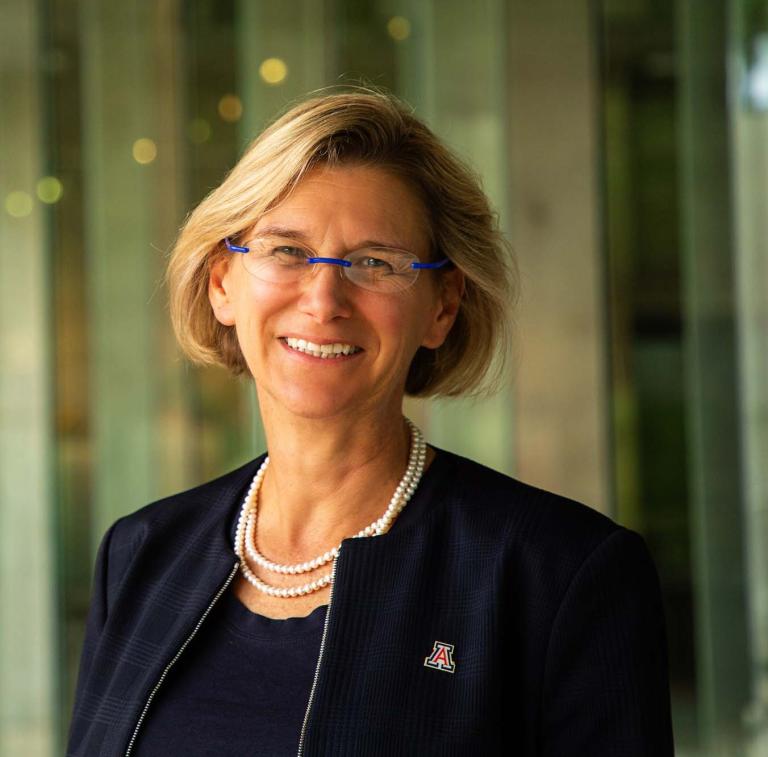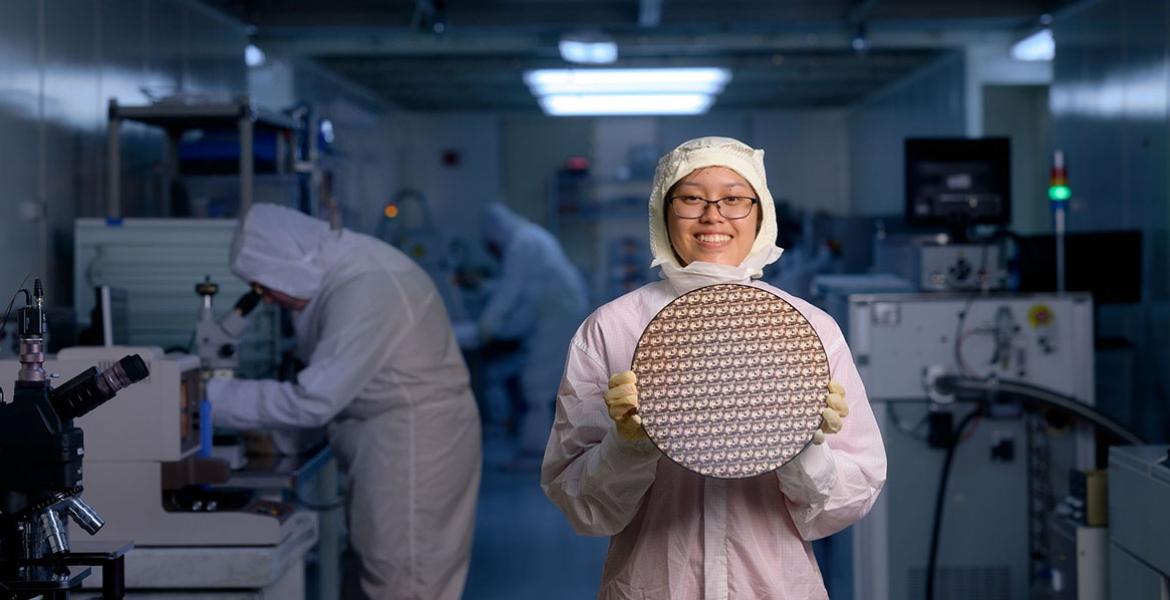$35.5M Awarded to College of Engineering for Tech Center Expansion
The Arizona Commerce Authority has awarded the College of Engineering $35.5 million in funding to expand a facility that supports manufacturing and research efforts involving semiconductors, computer chips, optical devices and quantum computing systems.
The cleanroom facility is known as the Micro/Nano Fabrication Center, or MNFC. The funding will also support expansion of training and educational modules to ensure that the state of Arizona will have the workforce needed to meet increasing demand in an industry of national importance.

"The Arizona Commerce Authority's investment will help make Arizona a national leader in micro- and nano-fabrication," said David W. Hahn, the Craig M. Berge Dean of the College of Engineering. "The benefits extend far beyond the University of Arizona to our many partner institutions and to the state's workforce, and they extend beyond today's technologies to the light-based and quantum circuits we will employ in the future."
The funds are part of the authority's $100 million commitment announced last year to beef up semiconductor and microelectronics development in the state, increase technological development and create a workforce to support these advanced fabrication industries.
"The MNFC expansion furthers Arizona's semiconductor workforce, supporting the work of students, faculty and industry leaders," said Sandra Watson, president and CEO of the Arizona Commerce Authority. "We're proud to support the University of Arizona with the expansion of this state-of-the-art center, which will serve as a key resource to drive further workforce development and innovation throughout Arizona."
The Southwest Nano-Lab Alliance, a coalition of universities invested in promoting the regional semiconductor industry, will be an important collaborator on the expansive initiative. Along with the UA, the alliance membership includes Arizona State University, Northern Arizona University, the University of Utah, the University of New Mexico and Rio Salado College. The UA will pass $3 million of the funds to Pima Community College and Central Arizona College to support expanded workforce training programs, including virtual reality classrooms.
"I am incredibly proud of our College of Engineering and the work it does for our state," said University of Arizona President Robert C. Robbins. "It has a long history of innovative research and training the next generation of Arizona's workforce. The expanded facility will have far-reaching impact for our students, researchers and industry partners, and I am very thankful to the Arizona Commerce Authority for this investment."
The U.S. currently holds only a 12% share of global semiconductor production capacity, according to a January report in the New York Times, and 90% of the most sophisticated chips are made in Taiwan. Part of the motivation for the CHIPS and Science Act, which President Joe Biden signed into law in August 2022, is to mitigate overseas supply chain threats by boosting production of chips in the U.S.

"We all felt the significant impacts of supply chain issues during the pandemic years, so there's now a concerted effort to bring things closer to and within the U.S.," said Mark Van Dyke, associate dean of research and professor of biomedical engineering.
University leaders are moving with urgency to address the challenges and opportunities, said Liesl Folks, vice president of semiconductor manufacturing.

"We are committed to advancing sustainable economic development, training the workforce of the future and enhancing national security – thereby growing the pool of well-paid jobs in Arizona and across the nation," Folks said. "To do this effectively, we must harness the country's extraordinary research and development talent and attract more workers to the wide array of relevant disciplines to support an expanded manufacturing sector. As one of America's leading research universities, the University of Arizona is in a leading position to quickly move to address these needs."
The lion's share of the grant to the university is dedicated to upgrading and expanding the MNFC facility and installing state of the art equipment. The university has already committed an additional $4 million to upgrade the center's infrastructure.
"These tools are basically made to order. They are not high-volume kinds of products. Funding like this is going to allow us to get these higher-priced tools and gain unique capabilities," Van Dyke explained. "It is going to put Arizona prominently into the national landscape, and ahead of places that have more generic manufacturing capacities."
The engineering college plans to develop innovative teaching tools to train students from the UA and partner schools to work with this technology. This is significant, given projected workforce shortages in the semiconductor industry – estimated to be tens of thousands a year across the nation.
A cleanroom is a research or manufacturing environment virtually free of pollutants, in which protocols for chip manufacturing are necessarily rigid. To streamline the training process, the university will create a digital twin of the MNFC facility and all the tools, yielding a virtual reality simulation of the facility that workers can use to familiarize themselves with the workflows and equipment.
With this approach, trainees won't need to wear special cleanroom suits while they are training, and training can be done from anywhere, including Southwest Nano-Lab Alliance partner institutions, and in greater numbers than if training were limited to the physical cleanroom.
If past patterns are any indication, Van Dyke said, the new production will spark downstream economic benefits to the state.
"It's not just the huge manufacturers themselves, like Intel and TSMC," he said, "there's a whole constellation of OEMs (original equipment manufacturers), suppliers and service providers that have and will continue to locate in Arizona to be close to these bigger companies."
The UA is uniquely positioned to make the most of an advanced semiconductor research and workforce training center, Hahn said.
"We have the institutional support, industry and academic partnerships, faculty, research programs and related infrastructure to move the needle dramatically on both workforce development and research and development," he said.


